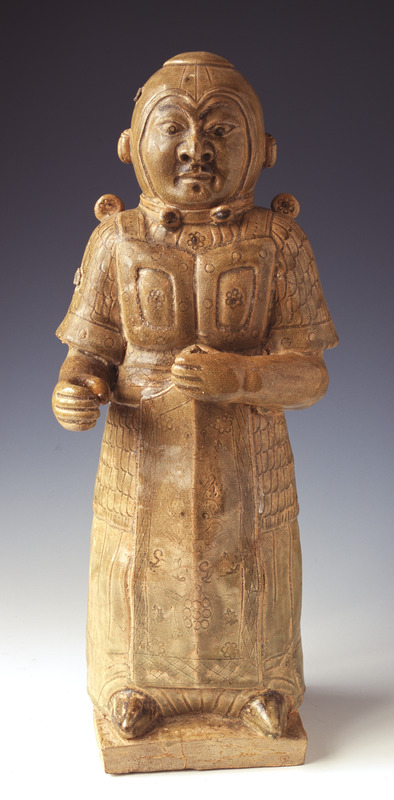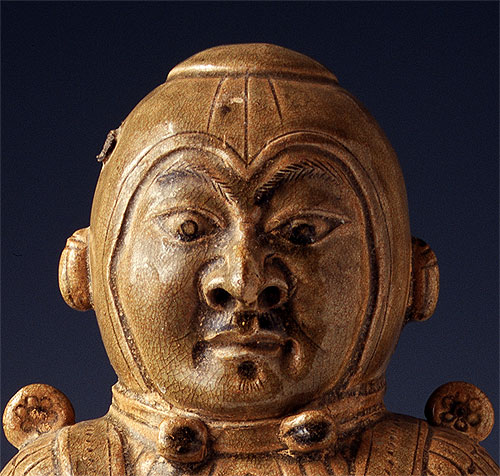Celadon Figurine of a Warrior by Yuezhou Kiln

Tang Dynasty(618—907AD)
Height: 53cm; Width of Shoulder: 15cm
Excavated from Xianjiahu, Changsha City, Hunan Province
Celadon warriors were one of the forms of figurines used by ancient people to ward off evil spirits and protect the soul of the deceased. Many pairs have been excavated. They were popular from the Northern Wei (386—557AD) up until the early Tang Dynasty, but from the reign of Tang Gaozong onwards they were gradually replaced by Lokap la (Buddist guardian deities).

The Warrior figure wears a round helmet, with ear flaps on both sides, fastened at the neck. He is clad in a bright suit of amour, with a butterfly-shaped breastplate that is connected over his shoulder to his back protector. The figurine holds a shield in his left hand and his right hand appears as though grasping something.

He is standing on a square base. His eyebrows, eyes, beard, neck and feet have a brown underglaze, with impressed circular flowers and leaves on his armor and shield. Dragon and tortoise designs are incised in the center of the shield, surrounded by incised lattice patterns. Such complex stamped and incised decoration on the same object is extremely rare for celadon Yuezhou Kiln.
深入探索
Since the Eastern Han Dynasty (25—220AD), celadon porcelain was produced. The Yuezhou kiln, historically also called Xiangyin Kiln, possessed the same characteristics as those excavated from some Eastern Han Dynasty tombs. During the period of Sui and Tang Dynasties (581—901AD), Yuzhou Kiln was under the jurisdiction of the Yuezhou state and well-known for “gorgeously strewed with green flower designs”. Although, from the Eastern Han to the Tang Dynasty, the site of the kiln changed frequently, the technique of firing and producing was continuously advanced and the style of making refined. The celadon porcelains excavated in the tombs of the period of the Eastern Han Dynasty to Tang Dynasty were mostly produced by the Yuezhou Kiln.
The products of Yuezhou Kiln were decorated with underglaze color, carved, incised and stamped design, and were coated with green glaze.



